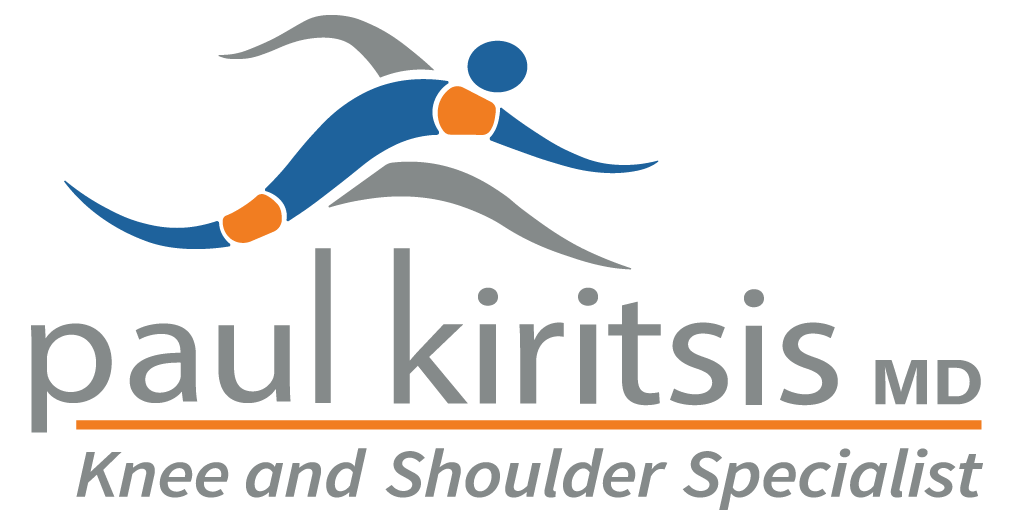Osteoporosis weakens bones, making them fragile and prone to fractures. This post will help you understand osteoporosis, including its causes, risk factors, symptoms, and treatment options.
Key Takeaways
- Osteoporosis is a bone disease characterized by reduced bone density, leading to fragile bones and an increased risk of fractures, often with no early symptoms.
- Key risk factors for developing osteoporosis include age, gender, hormonal changes, and lifestyle choices, making early detection and proactive management essential.
- Treatment options for osteoporosis include pharmacologic therapies, regular exercise, and nutritional support, aimed at strengthening bones and reducing fracture risk.
What is Osteoporosis?
Osteoporosis is a bone disease where bones become fragile and prone to fractures due to a reduction in bone mass and an imbalance in bone renewal. Under a microscope, the bone tissue in individuals with osteoporosis appears more porous compared to healthy bone, indicating a significant loss of bone density.
The condition is particularly concerning because it often progresses silently. Bones become brittle due to excessive absorption of old bone or insufficient formation of new bone. This imbalance in bone metabolism means that old bone is lost faster than new bone is created, leading to weakened bone structure.
Osteoporosis doesn’t just affect one part of the skeleton—it can impact various bones, including the spine, hips, knees, shoulders, and wrists. As bone strength decreases, the risk of bone fracture increases, making daily activities potentially hazardous. This fragility means that even minor falls or stresses, such as bending over or coughing, can result in broken bones.
Recognizing osteoporosis is key to maintaining bone health and preventing fractures. Proactive measures can help individuals manage their bone density and increase bone density while lowering the risk of serious complications.
Causes of Osteoporosis
Osteoporosis arises when new bone production fails to match the removal of old bone. This imbalance leads to weakened bone structure. Calcium and phosphate are essential minerals for building and maintaining strong bones. A diet low in calcium contributes to diminished bone density, early bone loss, and an increased risk of fractures.
Calcium and phosphate are vital for maintaining healthy bone formation. A deficiency in these nutrients accelerates bone resorption over formation, leading to weakened bones and contributing to osteoporosis.
In addition to dietary factors, there are other causes, including hormonal changes, particularly in postmenopausal women. These changes can significantly decrease bone density and increases bone density the risk of osteoporosis. Recognizing these causes aids in creating effective prevention and treatment strategies for healthy bones.
Risk Factors for Osteoporosis
Several risk factors can increase the likelihood of developing osteoporosis. Demographic factors such as age, gender, and ethnicity play a significant role. Older white and Asian women are particularly at high risk. Menopause-related hormonal changes can notably decrease bone density, heightening the risk of osteoporosis in postmenopausal women.
Conditions like rheumatoid arthritis and gastrointestinal diseases can increase osteoporosis risk. Additionally, secondary osteoporosis can stem from certain medical conditions and medications, such as long-term glucocorticoid use, which significantly affects bone density.
Lifestyle choices also impact bone health. Chronic heavy alcohol consumption is linked to a higher likelihood of developing osteoporosis. Being tall and thin increases the risk due to having less bone mass. Routine screenings for osteoporosis are generally recommended for women over 65 and younger women with specific risk factors.
Recognizing these risk factors is essential for early detection and prevention of osteoporosis. Necessary lifestyle changes can help individuals reduce their risk factor and maintain bone health.
Symptoms and Early Signs
In the initial stages of osteoporosis, individuals typically experience no noticeable symptoms. This silent progression means that bone loss occurs without any obvious signs until a fracture happens. The first sign of osteoporosis often appears when a fracture occurs from minimal trauma, such as a minor fall or even a sneeze.
As osteoporosis progresses, more evident symptoms may develop. These include back pain, reduced height, and a stooped posture. Weakened bones can lead to fractures even with minimal stress, like coughing or bending. This fragility highlights the importance of early detection and proactive management to prevent severe outcomes.
Timely intervention hinges on recognizing early symptoms. Noticing changes in posture, back pain, and unexpected fractures can facilitate early osteoporosis diagnosis and effective bone health management.
Diagnosis and Testing
Osteoporosis diagnosis primarily relies on bone mineral density (BMD) tests, most commonly through dual-energy X-ray absorptiometry (DEXA or DXA) scans, including a bone density test. These scans measure bone density and offer critical insights for diagnosis, typically recommended for women aged 65 and older or younger women at higher risk.
The DEXA scan measures bone mineral density, helping predict future fracture risks. Peripheral DEXA scans can measure bone density in areas like the wrist, but their predictive capacity for fractures is limited. Quantitative ultrasound (QUS) can also assess bone quality but does not directly measure bone mineral density.
Another valuable tool is the Trabecular Bone Score (TBS), which evaluates bone quality and fracture risk, providing additional insights beyond standard BMD measurements. Routine bone density screenings are crucial for early osteoporosis detection and management, enabling timely interventions to maintain bone health.
Treatment Options
Osteoporosis treatment often combines medication and lifestyle changes to manage the condition effectively. Bone-building medications and lifestyle adjustments can greatly enhance bone health and reduce fracture risk.
Pharmacologic therapies include various medications that help strengthen bones and reduce the risk of fractures. Physical activity is important for maintaining bone density and preventing bone loss. Nutritional support, especially sufficient calcium and vitamin D intake, is also important for bone health.
The following subsections will delve into each treatment option, offering comprehensive insights into effective osteoporosis management.
Exercise and Physical Activity
Regular exercise is especially needed for individuals with osteoporosis. Weight-bearing and resistance training exercises, such as walking, dancing, and weight lifting, help prevent bone mineral loss and improve muscle strength and weight bearing exercise bone density.
Adults should aim for at least 2 hours and 30 minutes of moderate aerobic activity weekly to promote bone health. Older adults with osteoporosis should avoid high-impact exercises and focus on safe, effective activities to maintain bone strength and prevent fractures.
Nutritional Support
Nutritional support is fundamental in managing osteoporosis. Insufficient calcium intake significantly hinders the development of new bone tissue. A well-balanced diet rich in calcium from sources like dairy products and leafy greens is essential for maintaining bone health.
Vitamin D deficiency impairs the body’s ability to absorb calcium, crucial for bone health. Vitamin D, obtainable through diet and sunlight exposure, aids in efficient calcium absorption.
Older adults should ensure they get enough calcium and vitamin D. Combining sufficient calcium intake with adequate vitamin D levels supports bone formation and overall bone health.
Prevention Strategies
Preventing osteoporosis requires a combination of diet, lifestyle changes, and fall prevention. A healthy, balanced diet rich in calcium and vitamin D is crucial for building and maintaining healthy bones.
Fall prevention in older adults with osteoporosis is vital to reduce fracture risk. Limiting alcohol consumption and quitting smoking significantly lower the risk of developing osteoporosis.
Medications can treat osteoporosis and prevent fractures, making a comprehensive prevention approach essential for bone health.
Living with Osteoporosis
Living with osteoporosis involves minor daily adjustments to minimize fall risks and maintain bone health. Removing tripping hazards and securing rugs can significantly reduce the likelihood of falls at home.
Incorporating balance and posture-enhancing exercises is vital for managing osteoporosis. Individuals with osteoporosis can usually continue working, provided they take necessary precautions to minimize fall risks.
Empowering individuals to live actively with osteoporosis involves practical advice and proactive management strategies to enhance quality of life.
Summary
In summary, osteoporosis is a significant health concern that requires early detection, effective treatment, and proactive management. Understanding the causes, risk factors, symptoms, and treatment options is crucial for maintaining bone health and preventing fractures.
By adopting a comprehensive approach that includes medication, exercise, and nutritional support, individuals can manage osteoporosis effectively. Living with osteoporosis involves making lifestyle adjustments and taking preventive measures to reduce fall risks and enhance quality of life.
We hope this guide has provided valuable insights and encourages proactive health management to combat osteoporosis. We recommend contacting your primary care physician to be evaluated and treated for osteoporosis.
Frequently Asked Questions
What are the main causes of osteoporosis?
The main causes of osteoporosis include an imbalance in bone renewal, insufficient calcium and phosphate intake, hormonal changes, and certain medical conditions. Addressing these factors is crucial for maintaining bone health.
Who is at the highest risk for developing osteoporosis?
Older white and Asian women, especially those who are postmenopausal, are at the highest risk for developing osteoporosis. Additionally, factors such as certain medical conditions, long-term medication use, and lifestyle choices can also contribute to this risk.
What are the early signs of osteoporosis?
The early signs of osteoporosis often include back pain, reduced height, a stooped posture, and commonly a fracture from minimal trauma. It’s important to monitor these signs, as they can indicate bone health issues.
How is osteoporosis diagnosed?
Osteoporosis is diagnosed mainly through bone mineral density (BMD) tests, particularly DEXA scans, which evaluate bone density and assess the risk of future fractures.





